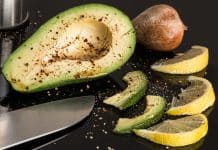Small grains or winter cereals are defined as oats, wheat, barley, rye, durum wheat and triticale. This article will cover some of the processing options available for these grains.
Oats

Rolled oats is the main end product of any oat processing plant. It is produced by flattening groats (de-hulled oats) between rollers under high pressure. The groats may be cut prior to rolling to achieve rolled end products of varying thickness. Rolled oats is consumed as a hot breakfast cereal that requires cooking.
Wheat
- Baked bread is produced from wheat flour, salt and water that is mixed to form a dough. The dough is aerated with carbon dioxide that is produced by yeast fermentation or other chemical means. Various commercial methods can be used to bake bread. These processes differ principally according to the way in which the dough is developed: biologically, by yeast fermentation; mechanically, by intense mixing and use of oxidising agents; or chemically, by using reducing and oxidising agents.
- Partly baked bread and rolls are used in hot bread shops, in-store bakeries, catering establishments and sold direct to the consumer who then bake it prior to consumption. The part-baked product can be frozen or sold direct as is, but the unfrozen product has a limited shelf life.
- Extruded wheat flakes are consumed as a ready-to-eat breakfast cereal that only requires the addition of milk. It is made from wheat grits that are cooked and shaped by an extruder before being rolled into flakes.
- Fresh noodles: Noodles are thin strips of pasta made from ordinary wheat flour and not from semolina such as other pasta products. The final (fresh) product has a moisture content of 32% while the dried product has a moisture content of 8-10%.
- Traditional process pasta: Pasta is the collective term used to describe products such as macaroni, spaghetti, vermicelli, etc. which are made from semolina milled from hard durum wheat. Pasta is formed from unleavened dough. The final (fresh) product has a moisture content of 30% while the dried product has a moisture content of 12%.
- Modern process pasta: The modern process of manufacturing pasta makes use of special extruders. This is a more efficient and less time-consuming process than the traditional. The product exiting the extruder has a lower moisture content and therefore requires a shorter drying time.

Barley

Brewer’s malt: Malting is the process whereby grains are allowed to germinate up to a point by soaking them in water. Once the desired stage of germination is reached, the germination process is halted by drying the grain with hot air. Malting develops the enzymes needed to convert the starches in the grain into various types of sugar. Malted grain is used in the making of a number of products ranging from beer, whisky and malt vinegar to confections such as Maltesers and flavoured drinks such as Milo.
Rye

Rye is a cereal crop used as a food crop as well as an animal feed, in ways similar to wheat and barley. It is used to produce rye flour, which is a flour high in gliadin but low in glutenin, as well as a number of rye breads: Mannheim-process rye bread, Berlin-process rye bread and Detmold-process rye bread. – Theresa Siebert, ARC-Institute for Agricultural Engineering
The manuals on the Agro-Processing of Cereal Crops Vol 1-3 contains complete information on the products discussed above as well as many other processing methods and products. The manual is available from the ARC-Institute for Agricultural Engineering. Contact Elmarie Stoltz on 012 842 4017 or stoltze@arc.agric.za.







